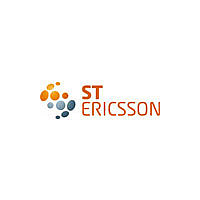ISP1362EE ST-Ericsson Inc, ISP1362EE Datasheet - Page 33

ISP1362EE
Manufacturer Part Number
ISP1362EE
Description
IC USB CTRL SNGL CHIP 64TFBGA
Manufacturer
ST-Ericsson Inc
Datasheet
1.ISP1362EEUM.pdf
(153 pages)
Specifications of ISP1362EE
Controller Type
USB 2.0 Controller
Interface
Parallel/Serial
Voltage - Supply
3 V ~ 3.6 V
Operating Temperature
-40°C ~ 85°C
Mounting Type
Surface Mount
Package / Case
64-TFBGA
Lead Free Status / RoHS Status
Lead free / RoHS Compliant
Current - Supply
-
Available stocks
Company
Part Number
Manufacturer
Quantity
Price
Company:
Part Number:
ISP1362EE/01
Manufacturer:
KAWASAKI
Quantity:
1 200
Part Number:
ISP1362EE/01
Manufacturer:
PHILIPS/飞利浦
Quantity:
20 000
Company:
Part Number:
ISP1362EEUM
Manufacturer:
IDT
Quantity:
300
NXP Semiconductors
ISP1362_5
Product data sheet
10.3.1 B-device initiating SRP
10.3.2 A-device responding to SRP
10.3 Session Request Protocol (SRP)
If the B-device wants to start a session, it must initiate SRP by ‘data line pulsing’ and
‘V
(note that only the A-device is allowed to drive V
peripheral, and the A-device assumes the role of a host. The A-device detects that the
B-device can support HNP by getting the OTG descriptor from the B-device. The A-device
will then enable the HNP hand-off by using SetFeature (b_hnp_enable) and then go into
the ‘suspend’ state. The B-device signals claiming the host role by de-asserting its pull-up
resistor. The A-device acknowledges by going into the peripheral state. The B-device then
assumes the role of a host and communicates with the A-device as long as it wishes.
When the B-device finishes communicating with the A-device, both the devices finally go
into the idle state. See
As a dual-role device, the ISP1362 can initiate and respond to SRP. The B-device initiates
SRP by data line pulsing, followed by V
line pulsing or V
The ISP1362 can initiate SRP by performing the following steps:
The B-device must complete both data line pulsing and V
The A-device must be able to respond to one of the two SRP events: data line pulsing or
V
mechanism to disable or enable the SRP detection. This is useful for some applications
under certain cases. For example, if the A-device battery is low, it may not want to turn on
its V
function.
When the data line SRP detection is used, the ISP1362 can detect either the DP pulsing
or the DM pulsing. This means a peripheral-only device can initiate data line pulsing SRP
through DP (full-speed) or DM (low-speed). A dual-role device will always initiate data line
pulsing SRP through DP because it is a full-speed device.
1. Detect initial conditions [read ID_REG, B_SESS_END and SE0_2MS (bits 0, 2 and 9)
2. Start data line pulsing [set LOC_CONN (bit 4) of the OtgControl register to logic 1].
3. Wait for 5 ms to 10 ms.
4. Stop data line pulsing [set LOC_CONN (bit 4) of the OtgControl register to logic 0].
5. Start V
6. Wait for 10 ms to 20 ms.
7. Stop V
8. Discharge V
BUS
•
BUS
of the OtgStatus register].
register], optional.
Steps to enable the SRP detection by V
– Set A_SEL_SRP (bit 9) of the OtgControl register to logic 0.
BUS
pulsing. The ISP1362 allows you to choose which SRP to support and has a
pulsing’. When the A-device detects any of these SRP events, it turns on its V
by detecting SRP. In this case, it may choose to disable the SRP detection
BUS
BUS
pulsing [set CHRG_V
pulsing [set CHRG_V
BUS
BUS
pulsing.
for about 30 ms [by using DISCHRG_V
Figure 18
Rev. 05 — 8 May 2007
and
BUS
BUS
Figure
BUS
(bit 1) of the OtgControl register to logic 0].
(bit 1) of the OtgControl register to logic 1].
pulsing. The A-device can detect either data
BUS
19.
pulsing:
BUS
). The B-device assumes the role of a
Single-chip USB OTG Controller
BUS
BUS
pulsing within 100 ms.
(bit 2) of the OtgControl
© NXP B.V. 2007. All rights reserved.
ISP1362
32 of 152
BUS
















